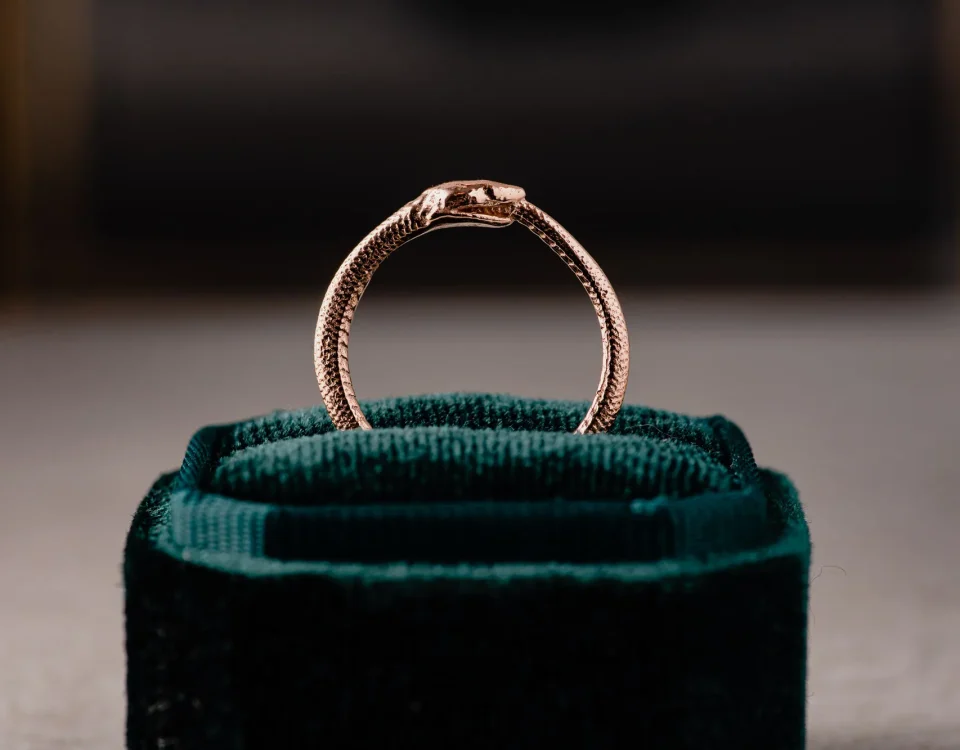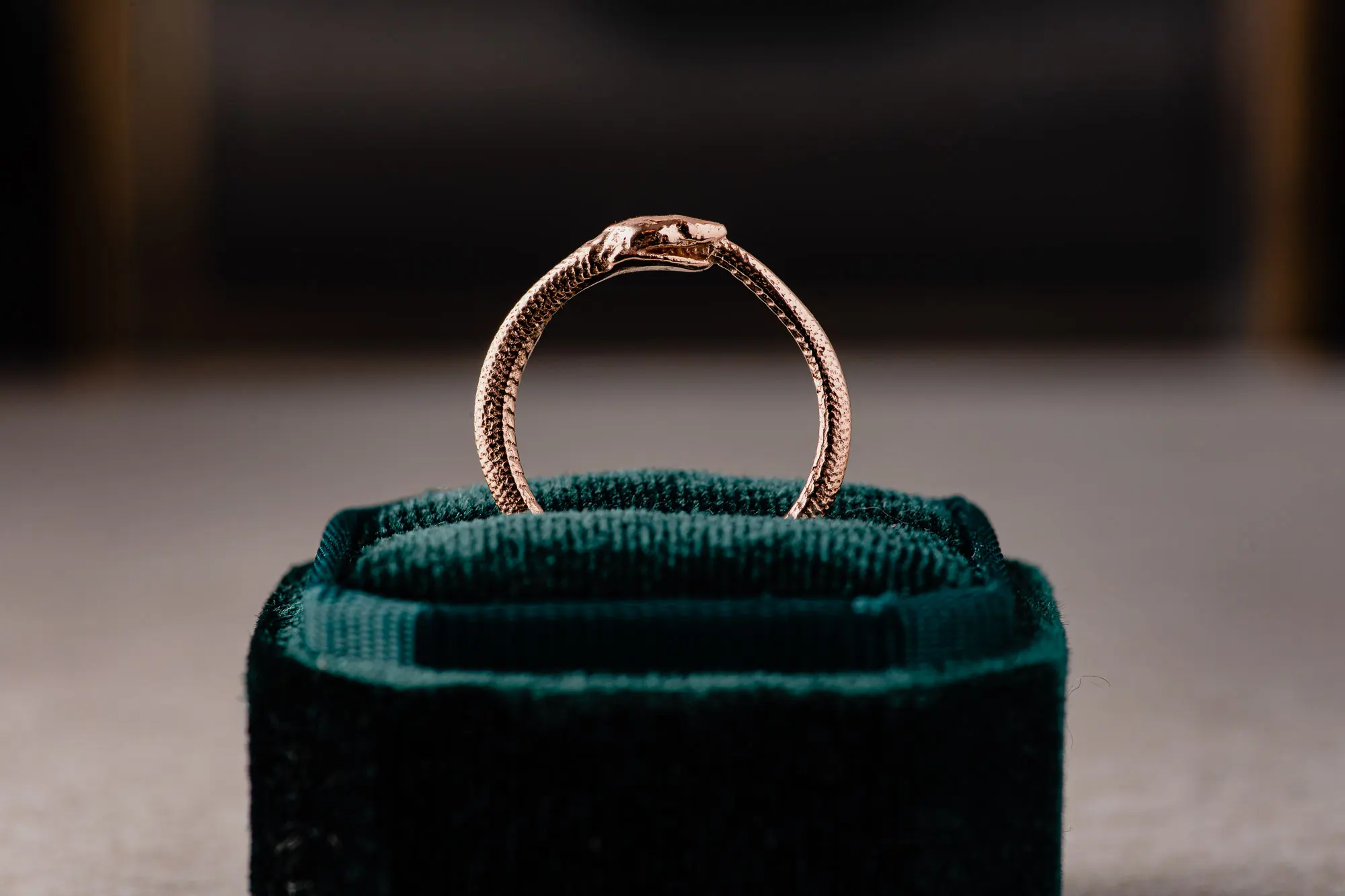
Ouroboros Ring
24 March, 2023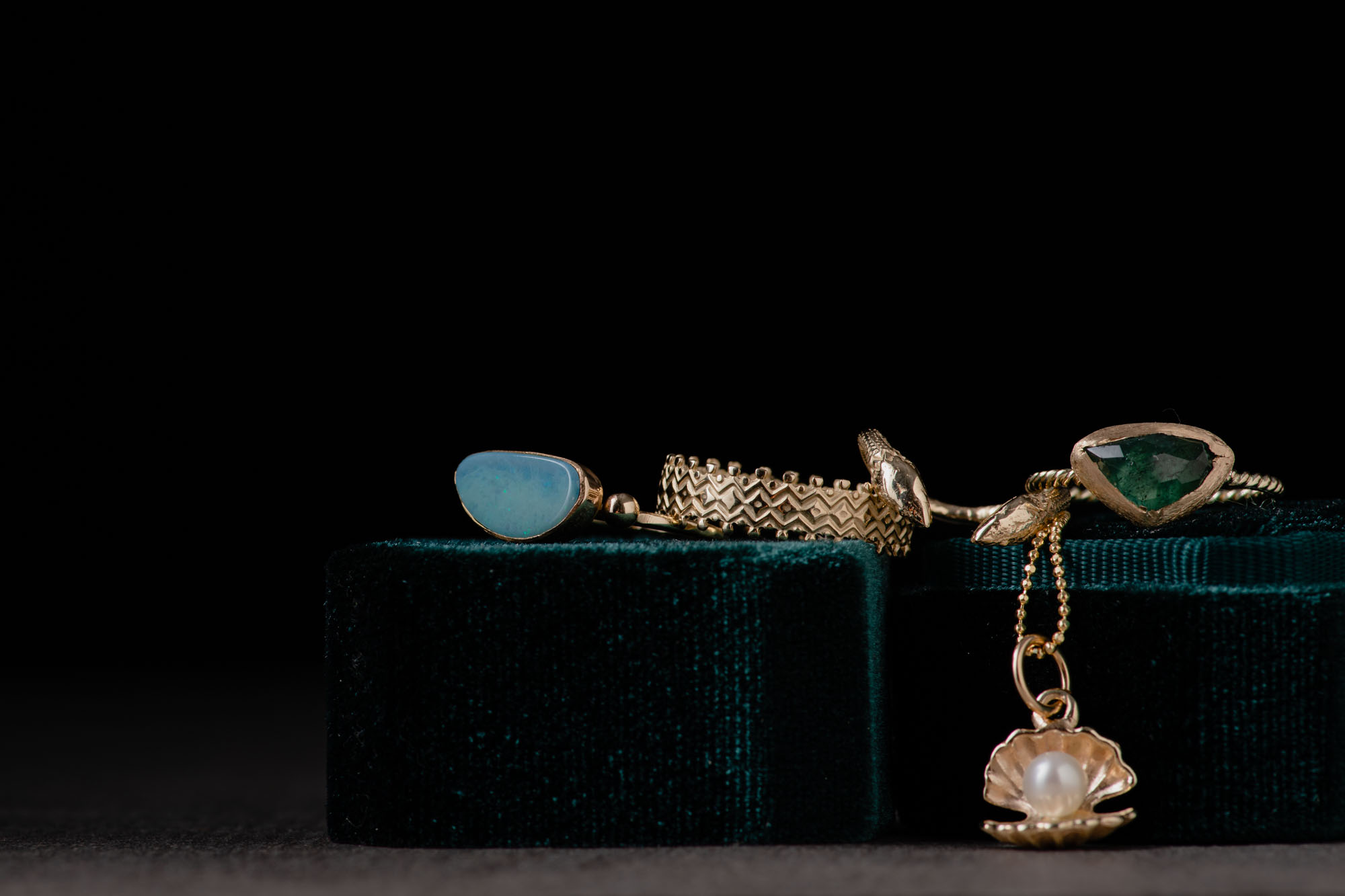
Throughout my career as a jewelry maker, many clients asked me about the differences between solid gold jewelry and gold-plated pieces. Specifically, people wanted to know what to choose between the two and whether the cost difference was justified.
As you might have seen on my e-shop, I currently work on making sterling silver pieces or solid gold ones. A few years ago, I also used to work with gold plated silver pieces, however, I decided to part with them for good, and I never looked back. Since this is a complicated issue, I thought I should write a long blog post explaining the differences between the two types of jewelry.
Specifically, in the following lines, you will find info about the crafting processes, the jewelry's cost, and which you should pick based on your budget and environmental sensitivity, along with replies to some frequently asked questions.
So, let's dive into the debate on gold-plated and solid gold jewelry.
Understanding Gold-Plated Jewelry
Gold-plated jewelry has gained popularity in recent years, mainly because it offers an affordable alternative to solid gold pieces. However, it is crucial to understand what gold plating entails and its key characteristics. The term gold plating practically describes a process in which a subtle layer of gold is added to the surface of a base metal. What's also important to know is that the added gold layer varies: it can be anything between 0.5 and 2.5 microns.
Despite its allure, it's crucial to recognise that gold-plated jewelry differs significantly from solid gold in terms of construction, durability, and -apparently- value. While gold-plated jewelry can provide an attractive aesthetic at a lower price point, it is important to consider its limitations and disadvantages.
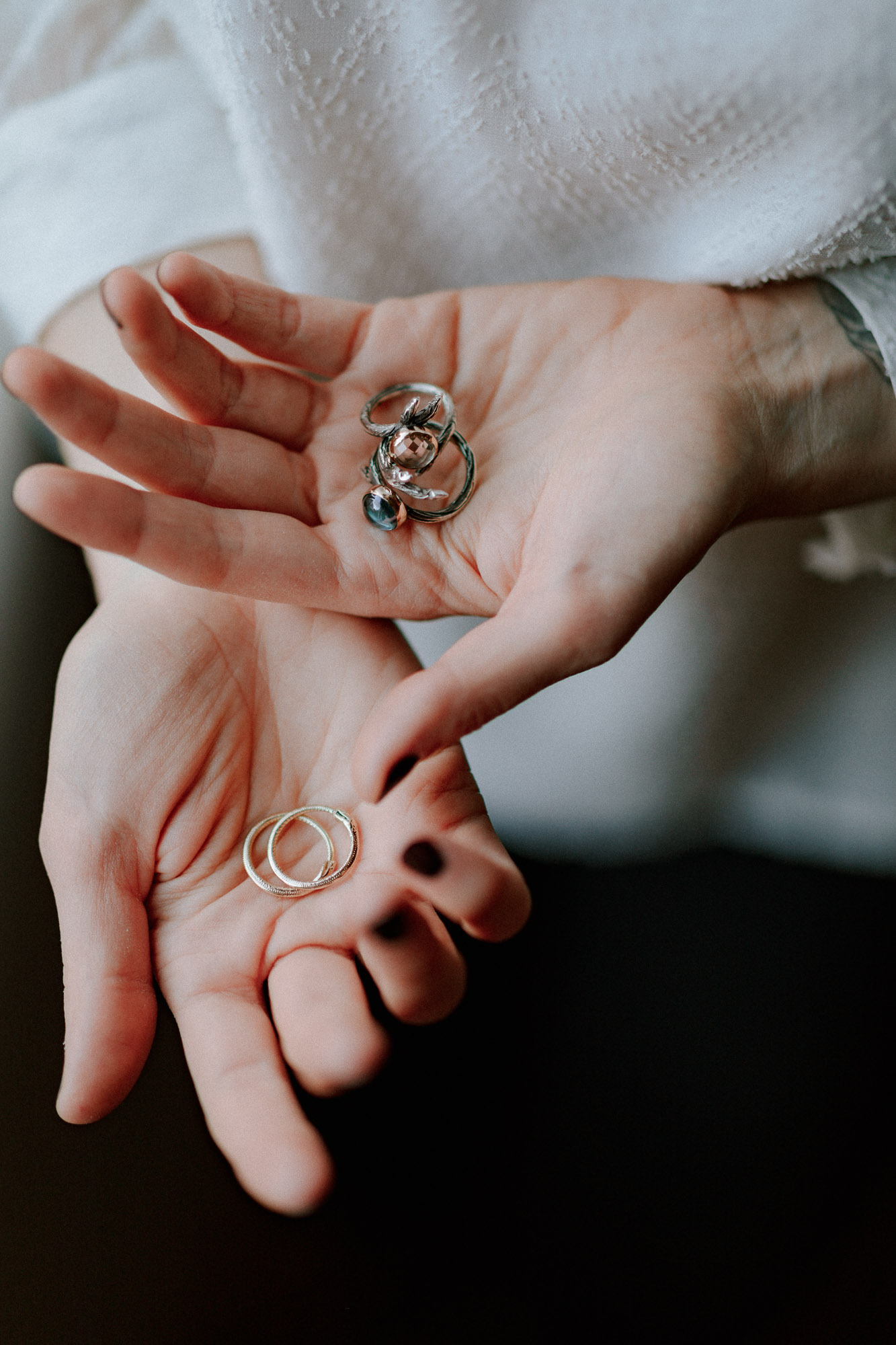
Pros and Cons of Gold-Plated Jewelry
Gold-plated jewelry comes with certain advantages, making it an attractive option for those seeking affordability and style. The most significant benefit for most people is the lower cost compared to solid gold jewelry. With gold plating, you can enjoy the appearance of gold, especially yellow gold which is the most popular, without paying what you'd pay for solid gold. Therefore, gold-plated jewelry is a solution to keep your expenses down. In addition, the increased popularity of gold-plated jewelry means you can find several designs.
However, before buying gold-plated jewelry, you should also keep in mind its drawbacks. Apparently, its biggest disadvantage is durability. As I mentioned earlier, gold plated jewelry is made by adding a certain layer of gold on a base metal which of course tends to wear off over time. Apart from losing its shine, your jewelry will also reveal the base metal and will show signs of wear over time -sometimes very rapidly when exposed to moisture and chemicals.
As a result, gold-plated jewelry requires more frequent maintenance and the so-called re-plating to retain its original appearance. Furthermore, its value in terms of investment and heirloom potential is significantly lower compared to solid gold jewelry.
That said, while gold-plated jewelry might initially seem a cost-effective yet stylish option, it's crucial to understand everything about its long-term and real value. Unlike solid gold jewelry, gold-plated pieces won't have either a significant value or durability. Therefore, gold-plated jewelry feels more like a short-term investment.
Understanding Solid Gold Jewelry
Solid gold jewelry holds a timeless charm and is prized for its inherent value, durability, and -most importantly- captivating beauty. Understanding the characteristics of solid gold is vital in appreciating its unique qualities compared to gold-plated jewelry.
While solid gold may come at a higher price, it offers a range of advantages that make it a valuable investment for those seeking timeless pieces.
What is Solid Gold?
Solid gold represents the highest standard of gold available for jewelry. While 24K gold is exceptionally pure, its softness makes it impractical for everyday wear. Unfortunately, pure gold is so soft that its shape can be altered -and, therefore, damaged- even during routine daily activities. As a result, 24K gold in jewelry is rare -if not inexistent.
Instead, buyers opt for 14K, 18K, or 22K solid gold jewelry pieces that blend pure gold and other alloys. It's worth noting that 9K and 10K gold are also available, although they are often less preferred due to their lower gold content (and value) and resulting color variation. Generally speaking, the distinctive yellow color of gold is hard to find in 9K or 10K gold jewelry (unless it has been gold plated with 14K or 18K or 22K gold. In that case, you will get the looks of a 14K or 18K piece, while of course you will still have a 9K or 10K gold piece underneath).
Solid gold jewelry's composition determines its distinct color, weight, and shine. Many people consider yellow gold as being the 'purest' type of gold. This is because its colour is most closely related to the gold which is mined from the Earth.
However, there are many popular colours for gold jewelry depending on what alloys a jeweller will use. For instance, blending copper with gold creates elegant rose gold jewelry, while mixing nickel white or palladium to gold produces white gold. By varying the alloys, jewelers can achieve an array of colors that even includes green or blue gold, making each piece unique and visually charming.
In solid gold jewelry, the term "karat" carries great importance as a measurement system indicating the purity of gold. Karats represent the ratio of pure gold to other metals or alloys used in a jewelry piece.
For example, 18 karat gold, commonly called 18K gold, consists of 18 parts of gold, with the remaining 6 comprising other metals like copper or silver. A higher number of karats signifies obviously a higher gold content, resulting in a more valuable and expensive piece of jewelry.
Therefore, karats are important because they provide valuable information about the gold content of jewelry, allowing you to choose based on your desired balance of budget and aesthetic preferences.
How is Solid Gold Different from Gold Plating?
The primary difference between solid gold jewelry and gold plated jewelry is their composition and construction. As I wrote in the previous lines, gold plating involves adding a thin layer of gold onto a base metal like silver, brass etc; on the other hand, solid gold jewelry is crafted exclusively from pure gold that is mixed with certain alloys to create the final piece.
The inclusion of carefully chosen alloys in solid gold jewelry ensures that, despite their presence, the jewelry retains its natural color and identity over time, thanks to the inherent qualities of gold. On the other hand, the thin gold layer of gold-plated jewelry sooner or later will wear off, exposing the base metal beneath.
Solid gold jewelry holds its value and does not tarnish over time. Therefore, solid gold boasts exceptional durability, allowing it to resist daily wear and retain its beauty for decades.
Pros and Cons of Solid Gold Jewelry
Solid gold jewelry comes with a wide range of advantages that set it apart from gold-plated jewelry. One substantial advantage is, of course, its lasting value. Solid gold maintains its worth over time, making it a great investment and potential heirloom piece. It is this enduring quality and timeless appeal that allows solid gold jewelry to be cherished and passed down to the next generations.
Furthermore, solid gold jewelry enjoys exceptional durability. It is resistant to tarnishing, corrosion, and discolouration, making it suitable for everyday wear. Unlike gold-plated jewelry, which may require frequent re-plating, solid gold maintains its beauty with minimal maintenance.
While solid gold jewelry offers numerous advantages, it always comes with a significantly higher price. However, despite its initial cost, solid gold jewelry proves to be a cost-effective choice in the long run due to its longevity and enduring value. Unlike other jewelry options that may require frequent replacement or maintenance, solid gold jewelry retains its beauty and quality over the years, ensuring that your jewelry continues to shine for generations to come.
Therefore, choosing solid gold jewelry is an investment in quality, authenticity, and everlasting beauty.
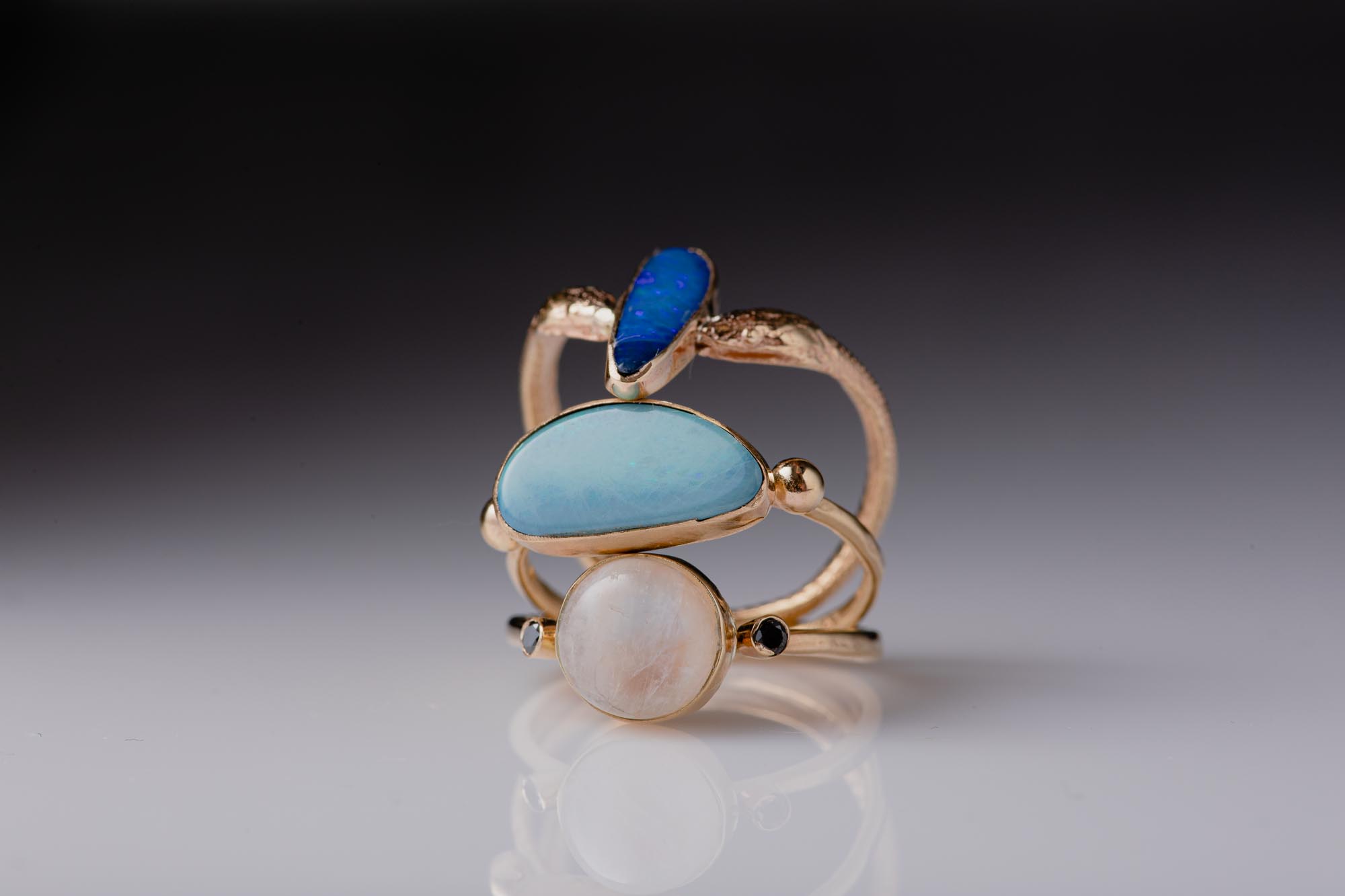
Solid gold vs. Plated gold: The question of sustainability
Now that you have a clear overview of the key differences between solid gold and gold plated jewelry, it's time to raise an important issue: sustainability. As a jewelry maker and conscious consumer, I want to minimise my environmental impact on the products I wear and produce. And when it comes to keeping our planet a good place to live, we have a clear winner: solid gold.
And here's why.
Solid gold jewelry is inherently more sustainable due to its longevity and recyclability. Unlike gold plated jewelry, which has a limited lifespan due to the potential wear-off of the thin gold layer, solid gold pieces can be enjoyed for generations without losing their value or beauty. In addition, solid gold can be melted down and reworked into new jewelry, adding to its circularity. This recycling process helps conserve precious resources and minimize the environmental footprint associated with producing new gold pieces.
On the other hand, gold-plated jewelry raises sustainability concerns due to its relatively short lifespan and the processes involved in its production. The thin layer of gold in plated jewelry will wear off over time, leading to an enormous amount of waste because people will throw their gold-plated jewelry away when they no longer retain its original appearance.
Additionally, the plating process often involves using chemicals and energy-intensive techniques, contributing to carbon emissions and potential environmental harm. Furthermore, the base metals used in plated jewelry, such as brass, may contain additional elements that can be challenging to recycle. Overall, while gold plated jewelry may offer affordability and much-needed gold-like looks, it falls short in long-term sustainability.
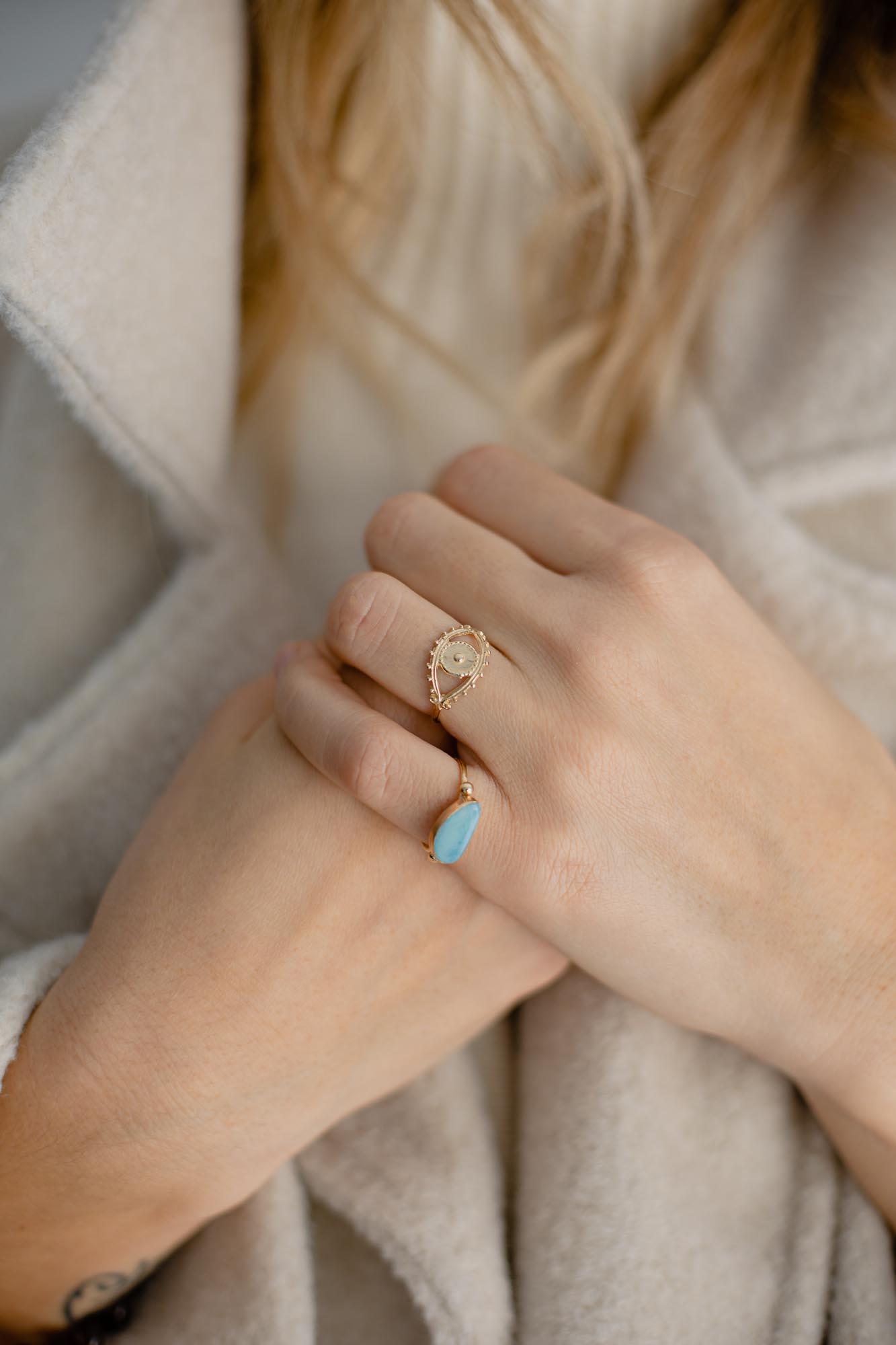
Reasons to choose solid gold jewelry
Yes, solid gold comes at a price, but I want to help you buy beautiful jewelry that will last forever. Yes, you read that right: forever.
So, here's what you should consider:
Buy vintage and recycled jewelry from antique shops or independent creators. You can find genuine bargains while minimising your environmental impact. Moreover, you will break the neverending consumer cycle, which means buying cheap jewelry that will sooner than later turn into waste.
The higher the number of karats, the less likely to get skin irritation. Gold-plated jewelry can be bad for your skin. Their base metals are usually nickel, brass, or copper, and very often they would initiate a reaction with your skin
See buying jewelry as an investment. Solid gold can be passed down from generation to generation. You've also seen your mother's or grandma's solid gold jewelry and how beautiful they look after decades. However, I'm not talking here about vintage aesthetics; instead, I want to point out the longevity of solid gold: you buy it once and have it forever.
Live with your jewelry. Buying a solid gold piece of jewelry means you can wear it -and, therefore, enjoy it- in your daily life. You can swim, shower, exercise, sleep, and go to the grocery store without the fear it wears off.
FAQ about solid gold jewelry and gold plated jewelry
In this final section of my long blog post/rant, I want to summarise a few things that I said above and to also reply to frequently asked questions.
In order to make the information more precise and easy to read, I will make this section look more like a Q&A with a jewelry maker :)
How can you tell when shopping for second-hand jewelry if it's really solid gold or fine silver?
Due to its price, we all have this insecurity when we are about to invest in solid gold or silver jewelry. No one wants to be fooled when investing, period. So, here's how you can tell the difference between solid gold and gold-plated jewelry.
Both solid gold and silver will be stamped. Specifically:
• Solid gold will have its number of karats: 8, 9, 10, 14, 18, 22, and 24K.
• Silver will have .925 for sterling and .999 for fine silver.
• Gold plated jewelry should have a stamp sign of GE or GEP -or GF for gold filled.
If there's no stamp on your jewelry (and that's an indication that something might be wrong), look for signs of tarnish. Solid gold jewelry cannot be tarnished, corroded, or rusted.
What is vermeil gold?
Vermeil gold is a term that describes a layer of gold added to sterling silver specifically. Gold plated jewelry usually refers to jewelry in which the base metal is usually copper, nickel, brass, etc. Also, in vermeil gold, the gold layer added to sterling silver pieces is thicker than the layer added to gold plated jewelry.
You might rightly wonder: is vermeil better than plated? The answer is yes. That's because you'll still have sterling silver left (which has a higher value than brass or copper for example) when the gold inevitably wears off over time.
What are karats in gold jewelry?
In solid gold jewelry, the term "karat" carries great importance. This is because Karat serves as a measurement system, indicating the purity of gold in jewelry on a scale ranging from 0 to 24. In other words, karats represent the ratio of pure gold to other metals or alloys used in the piece's design.
For example, 18 karat gold, commonly called 18K gold, consists of 18 parts of gold while the remaining 6 are other metals (copper, silver, etc.).
Why are karats important? Well, the number of karats provides valuable information about the gold content of jewelry, which will help you choose based on your desired balance of durability and aesthetic preferences. Obviously, the more karats a piece of jewelry has, the more expensive it will be.
What is the circularity of gold?
The good thing with gold is that you can melt it down over and over again. In addition, the melting process can be performed in every piece containing gold; therefore, it's not just 24K that can be melted down; it's also 10K, 14K gold, etc.
As you can imagine, there's no need to mine additional portions of gold; we can still use the existing gold to create new jewelry. That said, gold's recyclability directly connects to sustainability.

Solid Gold vs. Plated Gold: my final thoughts
As a jewelry maker, apart from my silver creations, I also decided to create solid gold pieces instead of gold plated ones a few years ago. In this long blog post, my intention was to inform you about the facts around these two types of jewelry and the things that you should remember regarding jewellery’s durability, longevity and enduring value.
After all, I believe it's better to buy two pieces of jewelry instead of twenty and break this endless loop of consumerism.
Solid gold lasts forever and the fact that solid gold jewelry can be passed down to future generations as heirloom pieces of not only a symbolic but also an actual value, comes with great importance.
You can view our solid gold line "Aegis" here.
Most of the products in the shop can be tailor-made for your own size within a few business days after placing your order. Please do not hesitate to contact me if you have further questions.


